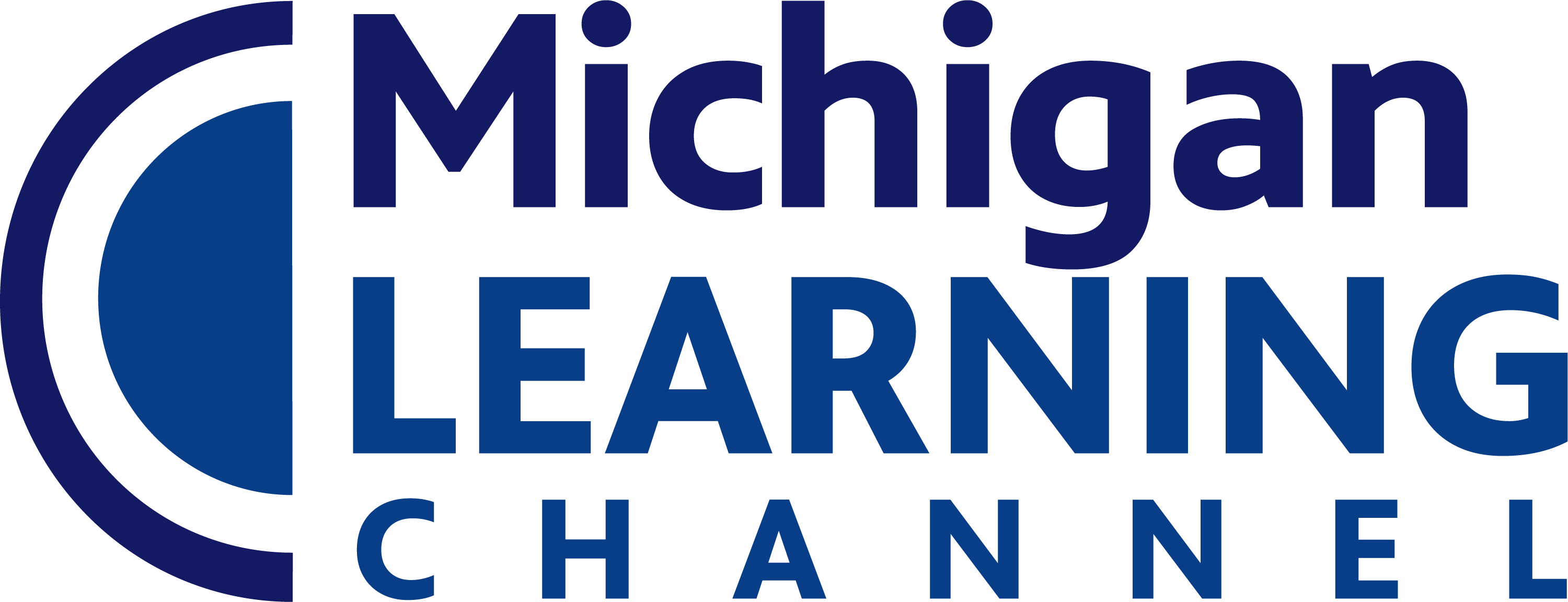Subjects
Shows
Produce clear and coherent writing in which the development, organization, and style are appropriate to task, purpose, and audience. (Grade-specific [...]
Develop and strengthen writing as needed by planning, revising, editing, rewriting, or trying a new approach, focusing on addressing what [...]
Use technology, including the Internet, to produce, publish, and update individual or shared writing products, taking advantage of technology’s capacity [...]
Conduct short as well as more sustained research projects to answer a question (including a self-generated question) or solve a [...]
Gather relevant information from multiple authoritative print and digital sources, using advanced searches effectively; assess the usefulness of each source [...]
Draw evidence from literary or informational texts to support analysis, reflection, and research.
Analyze how an author’s choices concerning how to structure a text, order events within it (e.g., parallel plots), and manipulate [...]
Analyze a particular point of view or cultural experience reflected in a work of literature from outside the United States, [...]
Analyze the representation of a subject or a key scene in two different artistic mediums, including what is emphasized or [...]
Analyze how an author draws on and transforms source material in a specific work (e.g., how Shakespeare treats a theme [...]
Cite strong and thorough textual evidence to support analysis of what the text says explicitly as well as inferences drawn [...]
By the end of grade 9, read and comprehend literary nonfiction in the grades 9–10 text complexity band proficiently, with [...]
Determine a central idea of a text and analyze its development over the course of the text, including how it [...]
Analyze how the author unfolds an analysis or series of ideas or events, including the order in which the points [...]
Determine the meaning of words and phrases as they are used in a text, including figurative, connotative, and technical meanings; [...]
Analyze in detail how an author’s ideas or claims are developed and refined by particular sentences, paragraphs, or larger portions [...]
Determine an author’s point of view or purpose in a text and analyze how an author uses rhetoric to advance [...]
Analyze various accounts of a subject told in different mediums (e.g., a person’s life story in both print and multimedia), [...]
Delineate and evaluate the argument and specific claims in a text, assessing whether the reasoning is valid and the evidence [...]
Analyze seminal U.S. documents of historical and literary significance (e.g., Washington’s Farewell Address, the Gettysburg Address, Roosevelt’s Four Freedoms speech, [...]
Write arguments to support claims in an analysis of substantive topics or texts, using valid reasoning and relevant and sufficient [...]
Write routinely over extended time frames (time for research, reflection, and revision) and shorter time frames (a single sitting or [...]
Introduce precise claim(s), distinguish the claim(s) from alternate or opposing claims, and create an organization that establishes clear relationships among [...]
Develop claim(s) and counterclaims fairly, supplying evidence for each while pointing out the strengths and limitations of both in a [...]
Use words, phrases, and clauses to link the major sections of the text, create cohesion, and clarify the relationships between [...]
Establish and maintain a formal style and objective tone while attending to the norms and conventions of the discipline in [...]
Cite strong and thorough textual evidence to support analysis of what the text says explicitly as well as inferences drawn [...]
By the end of grade 9, read and comprehend literature, including stories, dramas, and poems, in the grades 9–10 text [...]
Determine a theme or central idea of a text and analyze in detail its development over the course of the [...]
Analyze how complex characters (e.g., those with multiple or conflicting motivations) develop over the course of a text, interact with [...]
Determine the meaning of words and phrases as they are used in the text, including figurative and connotative meanings; analyze [...]
(+) Calculate expected values and use them to solve problems. Calculate the expected value of a random variable; interpret it [...]
(+) Develop a probability distribution for a random variable defined for a sample space in which theoretical probabilities can be [...]
(+) Develop a probability distribution for a random variable defined for a sample space in which probabilities are assigned empirically; [...]
(+) Weigh the possible outcomes of a decision by assigning probabilities to payoff values and finding expected values.*
(+) Find the expected payoff for a game of chance. For example, find the expected winnings from a state lottery [...]
(+) Evaluate and compare strategies on the basis of expected values. For example, compare a high-deductible versus a low-deductible automobile [...]
(+) Use probability to evaluate outcomes of decisions. Use probabilities to make fair decisions (e.g., drawing by lots, using a [...]
(+) Analyze decisions and strategies using probability concepts (e.g., product testing, medical testing, pulling a hockey goalie at the end [...]
Fit a linear function for a scatter plot that suggests a linear association.*
Interpret the slope (rate of change) and the intercept (constant term) of a linear model in the context of the [...]
Compute (using technology) and interpret the correlation coefficient of a linear fit.*
Understand statistics as a process for making inferences about population parameters based on a random sample from that population.*
Decide if a specified model is consistent with results from a given data-generating process, e.g., using simulation. For example, a [...]
Recognize the purposes of and differences among sample surveys, experiments, and observational studies; explain how randomization relates to each.*
Use data from a sample survey to estimate a population mean or proportion; develop a margin of error through the [...]
Use data from a randomized experiment to compare two treatments; use simulations to decide if differences between parameters are significant.*
Describe events as subsets of a sample space (the set of outcomes) using characteristics (or categories) of the outcomes, or [...]
Subjects
Shows
Produce clear and coherent writing in which the development, organization, and style are appropriate to task, purpose, and audience. (Grade-specific [...]
Develop and strengthen writing as needed by planning, revising, editing, rewriting, or trying a new approach, focusing on addressing what [...]
Use technology, including the Internet, to produce, publish, and update individual or shared writing products, taking advantage of technology’s capacity [...]
Conduct short as well as more sustained research projects to answer a question (including a self-generated question) or solve a [...]
Gather relevant information from multiple authoritative print and digital sources, using advanced searches effectively; assess the usefulness of each source [...]
Draw evidence from literary or informational texts to support analysis, reflection, and research.
Analyze how an author’s choices concerning how to structure a text, order events within it (e.g., parallel plots), and manipulate [...]
Analyze a particular point of view or cultural experience reflected in a work of literature from outside the United States, [...]
Analyze the representation of a subject or a key scene in two different artistic mediums, including what is emphasized or [...]
Analyze how an author draws on and transforms source material in a specific work (e.g., how Shakespeare treats a theme [...]
Cite strong and thorough textual evidence to support analysis of what the text says explicitly as well as inferences drawn [...]
By the end of grade 9, read and comprehend literary nonfiction in the grades 9–10 text complexity band proficiently, with [...]
Determine a central idea of a text and analyze its development over the course of the text, including how it [...]
Analyze how the author unfolds an analysis or series of ideas or events, including the order in which the points [...]
Determine the meaning of words and phrases as they are used in a text, including figurative, connotative, and technical meanings; [...]
Analyze in detail how an author’s ideas or claims are developed and refined by particular sentences, paragraphs, or larger portions [...]
Determine an author’s point of view or purpose in a text and analyze how an author uses rhetoric to advance [...]
Analyze various accounts of a subject told in different mediums (e.g., a person’s life story in both print and multimedia), [...]
Delineate and evaluate the argument and specific claims in a text, assessing whether the reasoning is valid and the evidence [...]
Analyze seminal U.S. documents of historical and literary significance (e.g., Washington’s Farewell Address, the Gettysburg Address, Roosevelt’s Four Freedoms speech, [...]
Write arguments to support claims in an analysis of substantive topics or texts, using valid reasoning and relevant and sufficient [...]
Write routinely over extended time frames (time for research, reflection, and revision) and shorter time frames (a single sitting or [...]
Introduce precise claim(s), distinguish the claim(s) from alternate or opposing claims, and create an organization that establishes clear relationships among [...]
Develop claim(s) and counterclaims fairly, supplying evidence for each while pointing out the strengths and limitations of both in a [...]
Use words, phrases, and clauses to link the major sections of the text, create cohesion, and clarify the relationships between [...]
Establish and maintain a formal style and objective tone while attending to the norms and conventions of the discipline in [...]
Cite strong and thorough textual evidence to support analysis of what the text says explicitly as well as inferences drawn [...]
By the end of grade 9, read and comprehend literature, including stories, dramas, and poems, in the grades 9–10 text [...]
Determine a theme or central idea of a text and analyze in detail its development over the course of the [...]
Analyze how complex characters (e.g., those with multiple or conflicting motivations) develop over the course of a text, interact with [...]
Determine the meaning of words and phrases as they are used in the text, including figurative and connotative meanings; analyze [...]
(+) Calculate expected values and use them to solve problems. Calculate the expected value of a random variable; interpret it [...]
(+) Develop a probability distribution for a random variable defined for a sample space in which theoretical probabilities can be [...]
(+) Develop a probability distribution for a random variable defined for a sample space in which probabilities are assigned empirically; [...]
(+) Weigh the possible outcomes of a decision by assigning probabilities to payoff values and finding expected values.*
(+) Find the expected payoff for a game of chance. For example, find the expected winnings from a state lottery [...]
(+) Evaluate and compare strategies on the basis of expected values. For example, compare a high-deductible versus a low-deductible automobile [...]
(+) Use probability to evaluate outcomes of decisions. Use probabilities to make fair decisions (e.g., drawing by lots, using a [...]
(+) Analyze decisions and strategies using probability concepts (e.g., product testing, medical testing, pulling a hockey goalie at the end [...]
Fit a linear function for a scatter plot that suggests a linear association.*
Interpret the slope (rate of change) and the intercept (constant term) of a linear model in the context of the [...]
Compute (using technology) and interpret the correlation coefficient of a linear fit.*
Understand statistics as a process for making inferences about population parameters based on a random sample from that population.*
Decide if a specified model is consistent with results from a given data-generating process, e.g., using simulation. For example, a [...]
Recognize the purposes of and differences among sample surveys, experiments, and observational studies; explain how randomization relates to each.*
Use data from a sample survey to estimate a population mean or proportion; develop a margin of error through the [...]
Use data from a randomized experiment to compare two treatments; use simulations to decide if differences between parameters are significant.*
Describe events as subsets of a sample space (the set of outcomes) using characteristics (or categories) of the outcomes, or [...]


